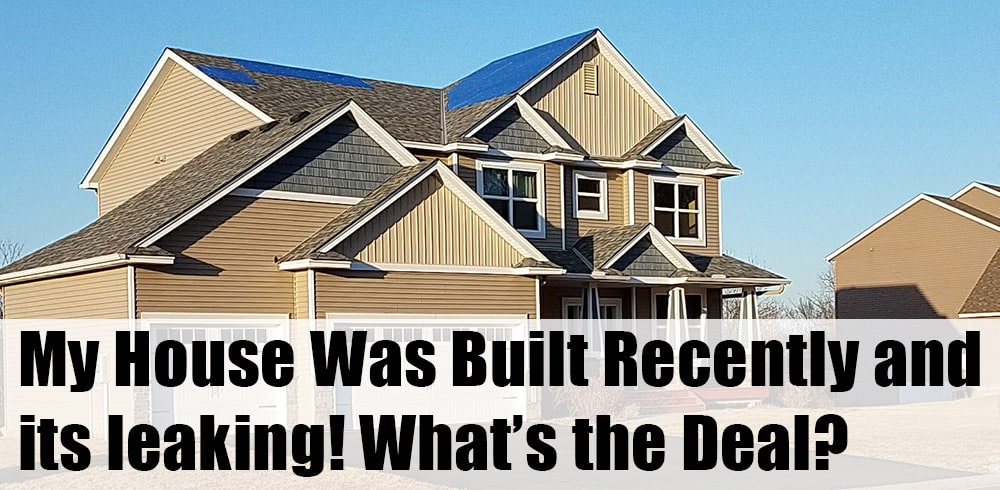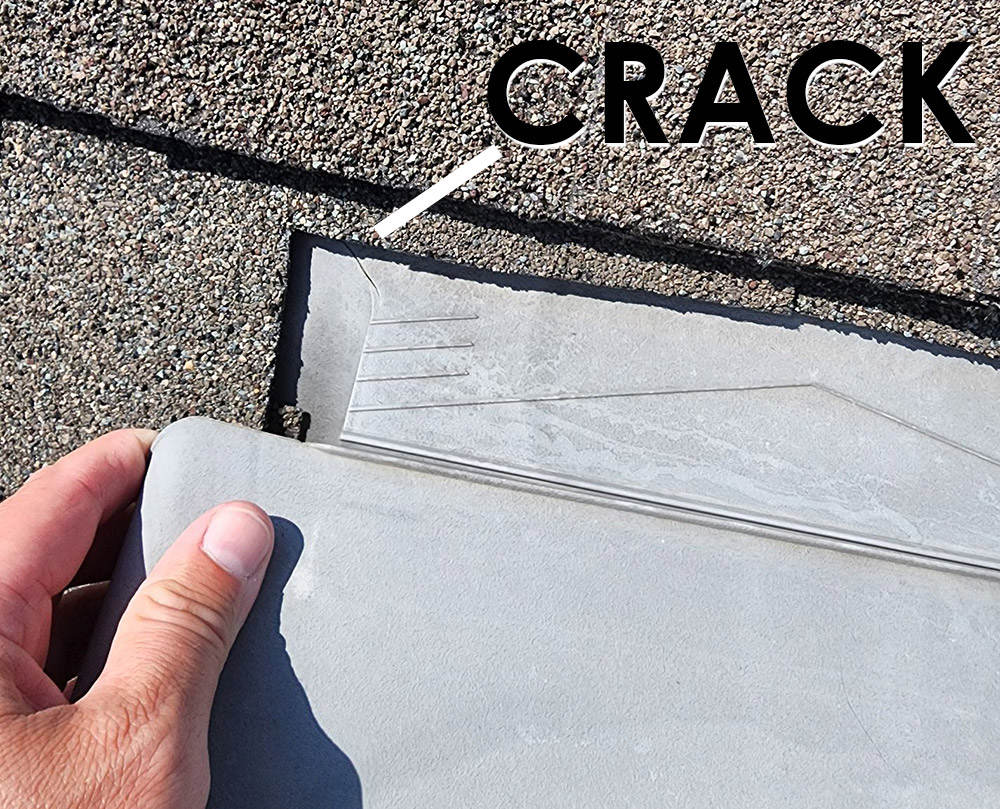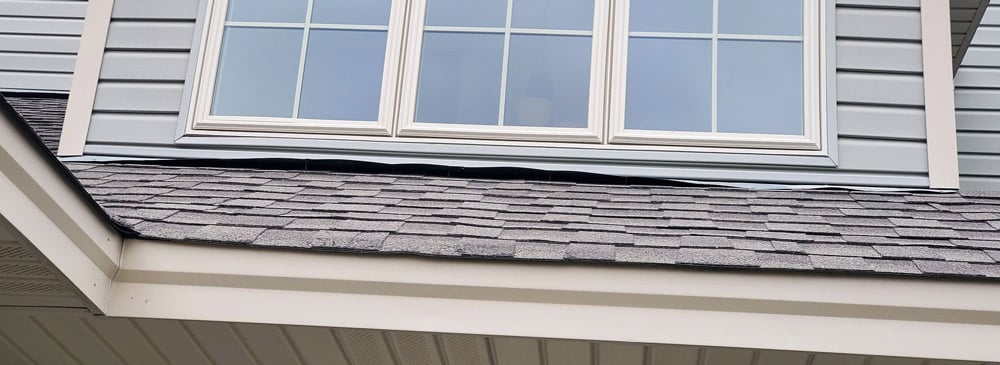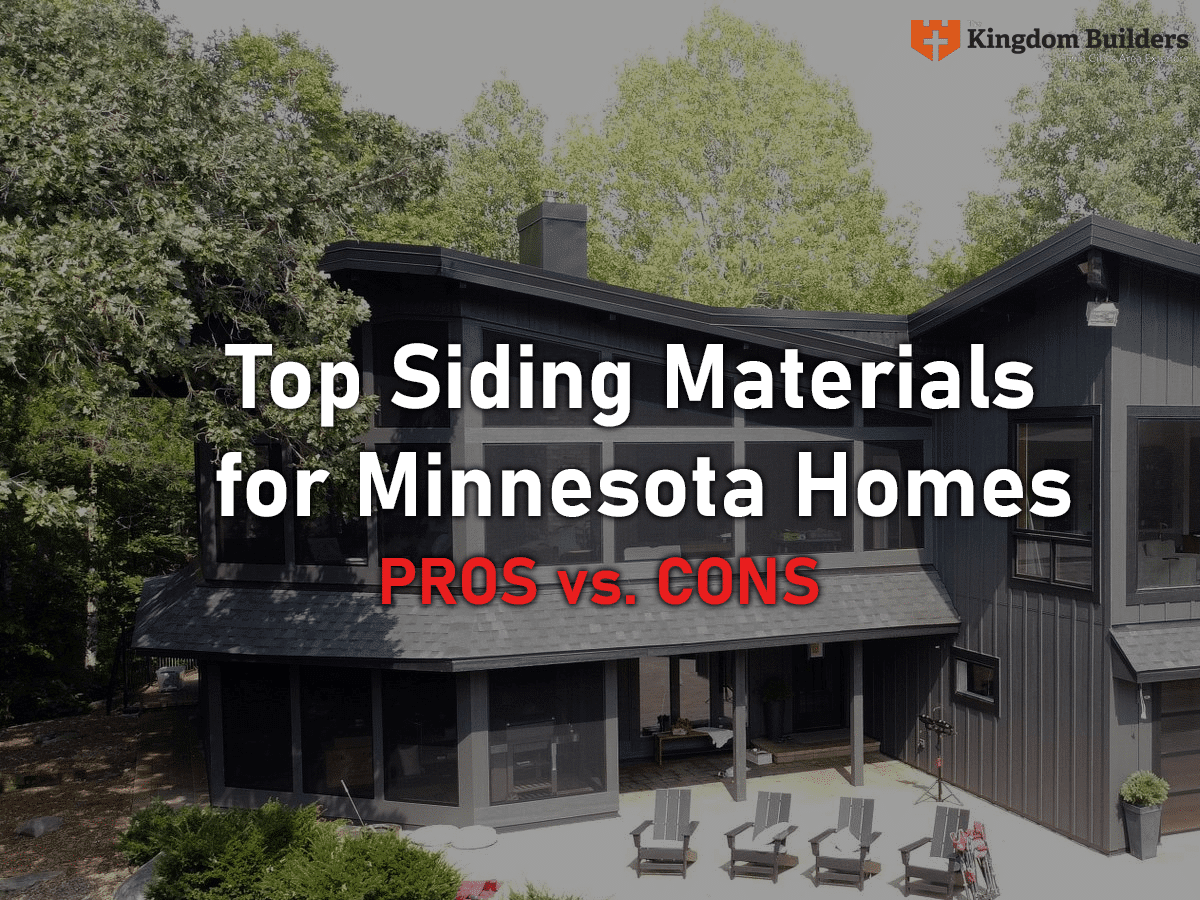My House Was Built Recently and It’s Leaking! What’s the Deal?

When you build or buy a home, you expect its roof to stand the test of time—keeping you dry and secure for decades. Yet, many homeowners find themselves dealing with leaks just 5 to 15 years after construction. At The Kingdom Builders, we’ve seen this frustration firsthand. It often comes down to the materials contractors choose to use during the build. We’ve seen these issues on 1 million-dollar+ homes as well, so the problems span all home types.
Two culprits stand out: plastic roof vents that crack under pressure and cheap shingles that fail to hold up. But those aren’t the only reasons roofs aren’t lasting as long as they should. Let’s unpack what’s going on and why it matters to you.
Plastic Roof Vents: Cheaper Up Front, But You Pay for It Long-Term

One of the first things we notice on a struggling roof is the state of the vents. Roof vents are critical for letting your attic breathe, preventing heat and moisture buildup that can rot the structure. Many builders opt for plastic vents because they’re cheap, easy to install, and look good (at first). Sounds great, right?
After a few years of baking in the sun, freezing in winter, and flexing under the wind, these plastic pieces start to crack in critical spots. Once that happens, water sneaks in, and you’re left with a damp attic—or worse, stains on your ceiling (which is when you’ll notice the problem). Metal vents will cost more upfront, but their durability makes them a good investment. If your home has plastic vents, keep an eye on them; hairline fractures can turn into big problems in a season or two.
Proactive Measures
If you want to stay ahead of the problem, we would recommend replacing your plastic vents with metal vents. The Kingdom Builders can give you a free estimate if you choose to go with us. Pricing depends on the steepness of the roof pitch and the amount of slant backs. These replacements can be tricky, as it’s difficult to break the seals on the shingles that need to be repositioned for the new vents. This is why hiring a professional is so important. We can carefully remove these seals, and hand-seal them back down to the roof deck.

Cheap Shingles: Don’t Last

Then there’s the shingles. We’ve walked plenty of roofs where the shingles look fine from the ground but are a mess up close. Builders sometimes cut corners by using low-grade asphalt shingles that promise affordability but deliver headaches. These budget options often lack the heft to seal properly, leaving gaps where wind-driven rain can slip through. Worse, they don’t hold up to gusts—after a strong storm, you might find pieces scattered across your yard. Quality shingles have thicker layers and better adhesives designed to bond tightly. If your roof was built with the cheap stuff, it’s no surprise leaks show up sooner than expected. Corners cut during construction rarely stay hidden for long.
Another reason cheap shingles fail is due to climate. In Minnesota, the winters are long, many builder-grade homes get roofed in the winter. The builder won’t wait for a warm period to seal the shingles down (which is the better method). Since hand sealing a whole roof is expensive and time-consuming, the builder simply roofs the home in the winter and calls it a day. Then in the summer, the wind gets under these shingles and dirties the adhesive. This compromises the seal, leading to issues on the roof.
RELATED: Are Class 4 Impact-Resistant Shingles Helpful for Minnesota Homeowners?
Other Reasons Roofs Fail Early

While plastic vents and subpar shingles are the common offenders, they’re not the entire story. Improper flashing around dormers, skylights, and valleys can cause issues. Flashing—those metal strips that redirect water—needs to be installed correctly. If it’s skimped on or poorly fitted, water finds a way in, often years before you’d expect.
Another issue is skimpy underlayment. This is the layer beneath your shingles that acts like a backup goalie, catching water that gets past the top defense (the shingle). When builders use thin, outdated felt instead of tougher synthetic options, it tears or degrades faster.
Lack of ventilation can also be a problem. A roof that can’t breathe traps heat and moisture, speeding up wear on everything from shingles to decking. Some homes we’ve inspected had vents clogged with debris or simply too few vents to do a proper job. Valleys and changes in roof pitch create a difficult environment to get proper attic ventilation as well. Builders and architects often don’t consider the attic ventilation when designing a home. Developing solutions after the home is designed and built is often really difficult, due to lack of planning.
Over time, all of these elements take a toll and leaks follow. It’s not always about obvious defects; sometimes it’s the small details that limit a roof’s lifespan.
RELATED: The Secret to Long-Lasting Roofs in Minneapolis (Even with Harsh Winters)
What This Means for Your Home
So, why does this happen? Too often, it’s about upfront savings trumping long-term value. Builders working on tight budgets or timelines might pick materials that “check the box” but don’t hold up. Five to fifteen years later, you’re the one paying the price—literally—with repair bills or even a full roof replacement. At The Kingdom Builders, we believe homes should be built to last, not just to sell. If you’re seeing leaks earlier than you’d hoped, it might be time to check what’s up top. Are the vents cracking? Are shingles curling or missing? A quick inspection can reveal a lot.
The good news? You’ve got options. Swapping out brittle plastic vents for metal ones can stop the cycle. If you’re building new construction, insist on quality roofing materials from the start. Select durable underlayment, proper flashing, and a ventilation plan that actually works. It might cost more now, but it’ll save you from watching your roof degrade early.
Let’s Build Better

Roofs shouldn’t be a guessing game. When we see leaks popping up in homes barely a decade old, it’s a sign something’s off with the choices made at the outset. At The Kingdom Builders, we’re here to help you spot these issues and fix them the right way. When we do re-roofs we use top-of-the-line materials: metal slant back vents, shingle brands that have been tested, tough underlayments, and make sure the ventilation system is correct. Whether you’re patching up or planning new construction, make sure your roof stands strong for decades, not just years.
Got a leak or a question? Reach out—we’d love to take a look.
Josh Clark
Josh Clark is a Project Manager for The Kingdom Builders. He has over a decade of experience in the roofing industry, overseeing crews, scheduling projects, and doing marketing efforts.




